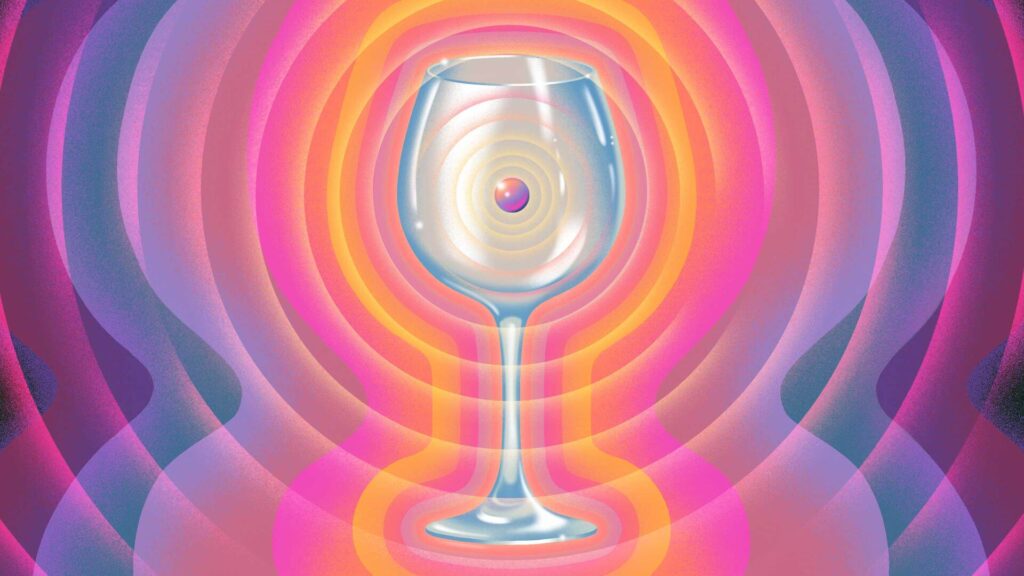
Resonance: the true magic of sound
Everything in the universe vibrates.
And when two vibrations meet in harmony, a subtle and powerful phenomenon is born: resonance. It's not just a physical effect; it's a law of the soul of the cosmos. Resonance makes the strings of an instrument sing, but it also shapes temples, aligns planets, and awakens memories in our cells.
Resonance is a mirror: it reveals hidden affinities between forms, sounds, and beings. It reminds us that the universe doesn't move randomly, but dances—and that this dance can be felt, understood, and cultivated.
This article is a living exploration:
not only of what is resonance, but of what could be when we inhabit it consciously.
We'll explore its manifestations in music, architecture, science, and cosmology, not as scholars, but as alchemists of sound. Because resonating isn't just understanding... it's vibrating in tune with the mystery.
What is resonance and how does it apply to sound?
Resonance, in simple terms, is when an object vibrates at its natural frequency due to an external force.Imagine blowing into an empty bottle and hearing a tone: that's resonance. According to Physics Classroom, occurs when sound waves cause something to vibrate louder if they match its natural frequency, such as when you sing a note and a crystal glass resonates until it shatters, an event famously observed by opera singer Enrico Caruso in 1906. In music, the strings of a guitar vibrate, and the wooden body resonates to amplify the sound, creating that rich melody we feel in our chests. It's as if the instrument "sings" with us, amplifying our creative voice.
Everything in the universe, from living beings to inanimate objects, has its own characteristic vibration or resonant frequency, that is, the way it oscillates spontaneously.This also applies to every cell, organ, atom, and molecule in our body, as well as everything around us.
Then there is what is called the Resonance Effect or the Resonance Principle, also known as "Sympathetic Vibration." This phenomenon describes how a vibration can propagate, reach another element, and cause it to begin oscillating in the same tune.Although it may seem like magic, it isn't; it's a basic principle of physics related to sound and waves.
A clear example of this effect is observed with two tuning forks tuned to the same frequency. If you strike one to make it sound, the other, untouched, will begin to vibrate and emit sound as well. The energy generated by the first tuning fork stimulates the second, bringing it into a state of resonance.
Resonance occurs when there is synchronization between vibrations, a compatibility of energies that share the same frequency. The external can influence the internal and vice versa, generating a connection between the two. This coincidence activates and amplifies the vibration, increasing its power, and this is when "Re-Sounding" occurs, which essentially means vibrating in unison with another frequency.



Why is resonance important?
Resonance is the key that enables feedback, the flow of information, and energetic interaction. It is a powerful universal law that demonstrates that everything in the cosmos is interconnected through vibrations, or vibrational waves.
Since everything in existence is in constant vibration, each thing has its own resonant frequency, regardless of whether we can perceive it or not. Related to this, all systems of the human body—organs, tissues, bones—have their own specific frequencies. These combine to form a unique harmonic that, along with the vibration of our thoughts and emotions, defines our personal resonance, our “signature sound.”
We are like "living tuning forks," emitting a constantly changing mix of frequencies. The most fascinating thing is our ability to resonate, to align and vibrate in harmony with other frequencies. That is, without a doubt, our greatest strength.
Resonance not only enriches music; it's essential in our daily lives. Think of a swing: if you push it at just the right moment, it goes higher. That's resonance, maximizing energy, as explained by ScienceDirect Topics. But it can also be dangerous: in 1940, the Tacoma Narrows Bridge in the US collapsed due to winds that matched its natural frequency, causing it to vibrate until it collapsed, according to BritannicaIn medicine, magnetic resonance imaging (MRI) uses resonance to create detailed images of our brains, helping diagnose diseases. According to recent estimates, more than 60 million scans will be performed annually by 2023. It's a tool that creates and destroys, unites and reveals.
How does resonance influence common music?
Every time you play an instrument, resonance is at work. The strings of a violin vibrate, and the wooden body resonates to project the sound, giving it that warm, deep tone, as detailed Recording ConnectionIn a flute, the air inside the tube vibrates at specific frequencies, creating clear notes. Even concert halls are designed to resonate, amplifying the music to fill the space. Think of a live concert: the hall's acoustics can make a piano note resonate like a heavenly echo, connecting the audience to the performer. Resonance gives music character, transforming simple vibrations into emotions, and is crucial to production, where factors like the instrument's size and material affect the sound, according to Digital Sound & Music.


How was resonance used in ancient temples and what was its purpose?
The ancients were masters of resonance, using temples as giant instruments. In India, temples were designed with chambers that amplified chants and hymns, creating a divine atmosphere for rituals, according to legend. ScienceIndiamagIn Palenque, Mexico, the Mayans built temples that acted as natural speaker systems, projecting sounds for ceremonies, perhaps to connect with the gods, as reported by National GeographicStonehenge in England may have used its arrangement of stones to amplify sounds, creating mystical echoes for rituals 3,000 years ago, according to studies in Archaeoacoustics. The resonance was not just technical; it was spiritual, elevating the human experience to the sacred, with research showing strong resonances between 95 Hz and 125 Hz in Neolithic structures, according to ResearchGate.


Could resonance alter matter?
Here we enter fascinating territory.
We know that resonance can break a glass if you hit the right note—a classic example in physics. But what if it could do more? In laboratories, sonoluminescence creates light inside water bubbles using intense sound waves, suggesting that sound can alter matter at the atomic level, according to WikipediaIn sonichemistry, ultrasonic waves break molecular bonds, helping to create new compounds, as explored in ByjusImagine a future where we use resonance to mold materials like we do clay, using sound to build or disassemble molecules. It's speculative, but science, like NMR for imaging, shows that resonance affects matter at quantum levels, according to Quanta Magazine.
In fact, the Dr. Anthony Holland, a musician who has expanded his career as an orchestra conductor to other disciplines, He and a team of scientists managed to use resonance frequencies (specifically the use of selected harmonics) to explode cancer cells in laboratory samples.Her dream is to be able to perform sound treatments with frequencies targeting cancer cells without causing pain or suffering to the person receiving them.
Relationship between sound resonance and cosmic resonance
The universe also resonates, like a cosmic symphony. Gravitational waves, discovered in 2015 by LIGO, are vibrations caused by black hole collisions, resonating through space-time, according to Nature PhysicsThis is cosmic resonance: the universe “singing” its own music. The sound resonance on Earth—like the singing of a choir—is an echo of these cosmic vibrations. Both are forms of vibrational energy, connecting us to the cosmos, with theories like cosmic resonance exploring affinities between objects, according to Cosmic Resonance TheoryIt is a deep connection, where earthly sound reflects the frequencies of the universe.
Scientific Facts: The Usefulness of Resonance for Music and More
Resonance isn't just theory; it's practice. In music, it amplifies the sound of instruments and rooms, as in Stradivarius violins, whose design resonates perfectly to create rich tones, according to Acoustics TodayIn technology, resonant circuits filter frequencies in radios, allowing us to listen to specific stations, as detailed TDKIn medicine, MRI uses magnetic resonance imaging to map our bodies, with more than 60 million scans annually estimated to occur by 2023. Even in engineering, it's designed to avoid destructive resonances, such as in airplanes that vibrate at high speeds, according to Scientific AmericanIt is the key that unlocks the potential of sound in our lives.
Sources
- Physics Classroom explanation of resonance and sound
- Recording Connection on resonance in music production
- National Geographic on Maya temple acoustics
- Quanta Magazine on quantum and cosmic resonance
- ScienceIndiamag on acoustics in Indian temples
- ResearchGate on acoustic resonances in ancient structures
- Wikipedia on sonoluminescence
- Byjus on resonance examples
- Nature Physics on gravitational waves
- Cosmic Resonance Theory on cosmic affinities
- Acoustics Today on musical resonance
- TDK on resonance in technology
- Scientific American on resonance applications
- Britannica on resonance vibration
- ScienceDirect Topics on acoustic resonance
- Digital Sound & Music on resonance in instruments
- Archaeoacoustics Wikipedia on ancient acoustics
